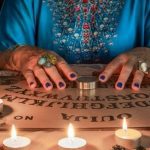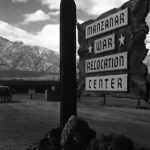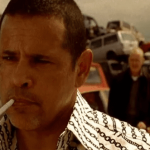 History
History  History
History  Weird Stuff
Weird Stuff 10 Superstitious Beliefs That Once Consumed Entire Cultures
 History
History 10 Bizarre Friendly Fire Incidents in Military History
 Technology
Technology 10 Modern Technologies That Accidentally Imitate Ancient Magic
 Mysteries
Mysteries 10 Mysteries of the Human Genome
 Weird Stuff
Weird Stuff 10 Things So Rare They’ve Only Been Found Once
 History
History 10 Legends Whose Last Moments Undid Their Glory
 Health
Health 10 Futuristic Ideas to Treat Common Medical Problems
 Weird Stuff
Weird Stuff Ten Surreal Attempts to Reverse Baldness
 Facts
Facts 10 U.S. Government Contingency Plans for the Unthinkable
 History
History 10 Odd Things Colonial Americans Kept at Home
 Weird Stuff
Weird Stuff 10 Superstitious Beliefs That Once Consumed Entire Cultures
 History
History 10 Bizarre Friendly Fire Incidents in Military History
Who's Behind Listverse?

Jamie Frater
Head Editor
Jamie founded Listverse due to an insatiable desire to share fascinating, obscure, and bizarre facts. He has been a guest speaker on numerous national radio and television stations and is a five time published author.
More About Us Technology
Technology 10 Modern Technologies That Accidentally Imitate Ancient Magic
 Mysteries
Mysteries 10 Mysteries of the Human Genome
 Weird Stuff
Weird Stuff 10 Things So Rare They’ve Only Been Found Once
 History
History 10 Legends Whose Last Moments Undid Their Glory
 Health
Health 10 Futuristic Ideas to Treat Common Medical Problems
 Weird Stuff
Weird Stuff Ten Surreal Attempts to Reverse Baldness
 Facts
Facts 10 U.S. Government Contingency Plans for the Unthinkable
10 Individuals Allegedly Killed by the U.S. Government
Throughout American history, certain tragic and untimely deaths have sparked deep suspicion, skepticism, and public intrigue. Official narratives often point to suicide, accidents, or random violence—but the shadowy nature of these incidents frequently leads many to question if something more sinister might be at play.
From whistleblowers and journalists to political insiders and controversial figures, here’s a captivating look at ten deaths that continue to fuel conspiracy theories alleging covert U.S. government involvement.
Related: Ten Cold Case Killings That Have Puzzled Police for Decades
10 Michael Hastings (2013)
Michael Hastings was a bold, relentless investigative journalist known for shaking the corridors of power with explosive revelations—most famously exposing misconduct that led to General Stanley McChrystal’s resignation. In June 2013, Hastings began sending cryptic messages suggesting he was being watched. Soon after, he was killed when his Mercedes crashed into a tree at high speed in Los Angeles. Witnesses described the car inexplicably accelerating to full speed moments before impact, fueling speculation about possible sabotage.
The official investigation concluded that the fiery crash was accidental. Still, skeptics point to Hastings’ ongoing investigations into powerful U.S. military and intelligence officials. Most intriguingly, reports emerged claiming the car’s onboard computer could have been remotely hacked, a capability publicly demonstrated by cybersecurity researchers shortly thereafter. Hastings had also reportedly been preparing a major exposé on CIA Director John Brennan, adding fuel to conspiracy theories suggesting he might have been deliberately silenced.[1]
9 Jeffrey Epstein (2019)
The death of Jeffrey Epstein—wealthy financier and convicted sex offender—while incarcerated in a high-security Manhattan jail cell became one of the most controversial and widely debated cases in recent memory. Epstein, who counted numerous high-profile politicians, royals, and business leaders among his connections, was awaiting trial on charges of sex trafficking minors when he was found dead, officially ruled a suicide by hanging.
Yet this official narrative has met intense public disbelief. Epstein’s connections to some of the most powerful people in the world, combined with inexplicable failures in jail security—such as disabled surveillance cameras, falsified guard logs, and Epstein’s removal from suicide watch shortly before his death—have spawned countless conspiracy theories alleging an orchestrated assassination to protect elite individuals from exposure.
Additionally, Epstein had reportedly expressed fears for his life and suggested someone tried to harm him weeks earlier. Due to Epstein’s untimely death, the identity and actions of his many powerful close associates have remained shrouded in mystery.[2]
8 Sandra Bland (2015)
The 2015 death of Sandra Bland, an outspoken advocate against police brutality, ignited national outrage. Bland was found hanging in her Texas jail cell three days after a controversial traffic stop, which escalated dramatically, leading to her arrest. Police ruled her death a suicide, pointing to her past struggles with mental health issues. Yet many questioned why a young woman with plans, including a new job at Prairie View A&M University, would suddenly choose to end her life.
Inconsistencies in the official story—including conflicting police statements, suspiciously edited jail footage, and unanswered questions about her treatment in custody—further fueled public suspicion. Her family also raised serious concerns about the investigation, noting that Bland had recently expressed optimism about her future. Public speculation persisted about whether Bland, who regularly posted videos criticizing police misconduct, might have been deliberately targeted to silence her vocal activism.[3]
7 Gary Webb (2004)
Investigative journalist Gary Webb gained prominence—and notoriety—for uncovering allegations that the CIA had connections to drug trafficking to fund anti-Communist forces in Latin America. His groundbreaking reporting, published in the “Dark Alliance” series, was met with fierce backlash and personal attacks that severely impacted his career and mental health. In 2004, Webb was found dead in his apartment with two gunshot wounds to the head—a death ruled officially as suicide.
The bizarre circumstances—two self-inflicted gunshots—immediately sparked skepticism. Critics argued Webb had been systematically discredited and isolated because of his explosive findings, noting it is exceedingly rare for suicide victims to inflict multiple head wounds. Adding further intrigue, some of Webb’s supporters alleged threats and intimidation from shadowy government-linked figures leading up to his death.[4]
6 Seth Rich (2016)
Seth Rich, a young Democratic National Committee staffer, was fatally shot in an alleged robbery gone wrong in Washington, D.C. But Rich’s murder quickly spiraled into a high-profile conspiracy theory, amplified during the heated political climate of the 2016 presidential election. The absence of stolen items, including his watch, wallet, and phone, cast significant doubt on the robbery narrative, leaving ample room for speculation.
Despite extensive debunking by authorities, a persistent theory claims Rich leaked sensitive DNC emails to WikiLeaks, potentially impacting the presidential election outcome. The FBI’s seemingly unusual involvement in a supposedly local crime, alongside contradictory public statements from law enforcement, fueled further speculation. Rich’s family publicly disputed these conspiracies, but the lack of concrete answers kept theories alive.
Adding further intrigue, WikiLeaks founder Julian Assange cryptically suggested Rich as a potential source during an interview, intensifying the controversy. Additionally, reports emerged alleging that Rich was alive and conscious when initially found, leading some to question why he wasn’t able to provide more information to investigators. Most mysteriously, several news outlets reported unusual difficulties accessing information via FOIA requests, suggesting possible interference or deliberate obfuscation from powerful entities, keeping the unsettling questions surrounding Seth Rich’s tragic end unresolved.[5]
5 Philip Marshall (2013
Philip Marshall, a former airline pilot and author known for books questioning the official narrative of 9/11 was found dead in his California home alongside his two teenage children and family dog in what authorities labeled a murder-suicide. Friends described Marshall as stable, optimistic, and deeply devoted to his family, making the official narrative difficult to accept for those who knew him.
Marshall had openly challenged official 9/11 accounts, alleging government complicity and cover-ups in his publications. Conspiracy theorists argued that Marshall’s murder-suicide appeared suspiciously convenient, suggesting he may have uncovered new evidence implicating powerful individuals or agencies. Notably, Marshall reportedly claimed to have sensitive information related to Saudi involvement in the 9/11 attacks shortly before his death.[6]
4 Danny Casolaro (1991)
Danny Casolaro was a journalist who believed he was on the brink of uncovering a global fraud network. The sprawling conspiracy he dubbed “The Octopus” involved powerful individuals across banks, government, and intelligence agencies. His research allegedly uncovered corruption related to the Iran-Contra scandal and the Inslaw Affair. Before Casolaro could publish his major breakthroughs, he was found dead in a West Virginia motel bathtub, his wrists deeply slashed—officially ruled a suicide.
Those close to Casolaro argued he was upbeat and confident about his findings, explicitly telling friends he feared assassination attempts. Crucially, all of Casolaro’s investigative notes mysteriously vanished, deepening suspicions of foul play and a calculated cover-up.[7]
3 John P. Wheeler III (2010)
The discovery of John Wheeler’s body, a former Pentagon official and adviser to Presidents Reagan and Bush, in a Delaware landfill, shocked the nation. Wheeler, a decorated Vietnam veteran, had mysteriously disappeared days earlier. Surveillance footage captured Wheeler acting disoriented, staggering through buildings and parking garages, and reportedly pleading for assistance, claiming someone had stolen his briefcase.
Authorities also claimed Wheeler had displayed erratic behavior days before, potentially linked to disputes with neighbors over construction projects and alleged plans involving incendiary devices. Given Wheeler’s extensive national security background—including involvement in cyber warfare strategy and biochemical warfare countermeasures—many theorists speculate his death involved classified operations, espionage, or attempts to silence potential leaks.[8]
2 Deborah Jeane Palfrey (2008)
Deborah Jeane Palfrey, dubbed the “D.C. Madam,” became infamous for operating an escort service that reportedly catered to prominent political figures. After being convicted of racketeering, Palfrey openly threatened to expose her high-profile clientele, implying powerful figures could be publicly humiliated. Days later, she was found hanged in a shed behind her mother’s home in Florida.
Though her death was quickly ruled a suicide, Palfrey had made several explicit public statements about never intending to take her own life in the weeks prior. Additionally, it is easy to argue her death conveniently prevented the exposure of her influential clients, deepening suspicions of a politically motivated assassination.[9]
1 Terrance Yeakey (1996
Officer Terrance Yeakey was celebrated for heroically rescuing victims in the immediate aftermath of the Oklahoma City bombing. A decorated police officer and military veteran, Yeakey was the first on the scene and personally saved multiple lives. But a year later, he was found dead under extremely suspicious circumstances—his body was discovered miles from his abandoned vehicle, bearing deep cuts, bruises, and a fatal gunshot wound. Despite the brutality of his injuries and signs he had been bound and tortured, his death was swiftly ruled a suicide.
Yeakey had expressed serious concerns to friends and family about being surveilled by unknown individuals in the months leading up to his death. He was reportedly compiling a detailed dossier of evidence that challenged the official narrative of the bombing, suggesting broader involvement than publicly disclosed. Mysteriously, that dossier was never found. Witnesses claimed Yeakey had become paranoid, aware that he was being followed, and had been pressured by federal agents. Some even allege he was preparing to go public with his findings. His family and numerous independent investigators remain convinced he was silenced to protect powerful interests.[10]








